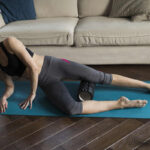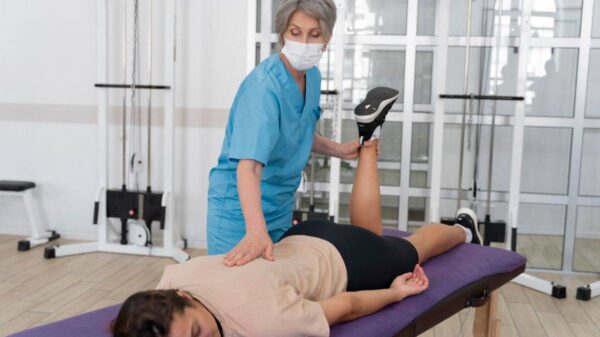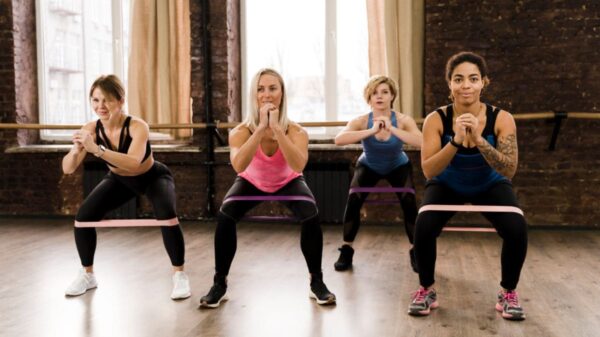Fire hydrant exercises, also known as quadruped hip abductions, are a powerful way to strengthen the glutes, improve hip mobility, and enhance overall lower body stability. This bodyweight movement primarily targets the gluteus maximus while engaging the gluteus medius, core muscles, and hip stabilizers.
Incorporating fire hydrants into a fitness routine can help sculpt the glutes, reduce the risk of injury, and alleviate lower back pain. Fire Hydrant Exercise guide explores the benefits of fire hydrants, how to perform them with proper form, and several advanced variations to maximize results.
How to Do Fire Hydrant Exercises
The fire hydrant is a straightforward and effective bodyweight exercise that requires no equipment, making it reachable to all fitness levels.
 Step-by-Step Guide
Step-by-Step Guide
Starting Position:
- Start on all fours with your hands directly beneath your shoulders & your knees aligned with your hips.
- Keep your spine neutral, engage your core, and gaze at the floor.
Lifting the Leg:
- With your knee bent at 90 degrees, lift your left leg outwards at a 45-degree angle.
- Maintain a stable pelvis and avoid leaning to one side.
Returning to Start:
- Lower your leg back to the starting position in controlled motion.
- Repeat for number of reps before switching sides.
Recommended Reps and Sets
- Complete three sets of 15 repetitions for each leg to achieve optimal glute activation.
Key Form Tips
- Keep your core engaged to prevent unnecessary spinal movement.
- Avoid rotating your hips excessively; the movement should come from your glutes.
- Point your foot slightly downward to activate the correct muscles.
Benefits of Fire Hydrant Exercises
Fire hydrants are a functional exercise that enhances strength, mobility, and injury prevention.
1. Glute Activation and Strength
Fire hydrants primarily target the gluteus maximus, the most significant muscle in the hips and pelvis. Strengthening this muscle improves posture, enhances athletic performance, and improves aesthetic muscle toning.
2. Improved Hip Mobility
The exercise engages the hip abductors, essential for lateral movements and overall lower body flexibility. This is particularly beneficial for running, squatting, and climbing stairs.
3. Injury Prevention
Weak glutes contribute to poor hip stability, leading to knee pain, lower back discomfort, and improper movement patterns. By strengthening the glutes and hip stabilizers, fire hydrants reduce the risk of injuries related to posture and movement imbalances.
4. Core Stability Enhancement
The fire hydrant requires core engagement to maintain balance. Strengthening the core improves spinal stability, reducing the likelihood of back pain and enhancing overall body control.
Fire Hydrant Variations for Increased Challenge
Once you have mastered the basic fire hydrant, progressing to advanced variations can enhance strength and endurance.
1. Fire Hydrant with Resistance Band
- Place a resistance band loop around your thighs, just above the knees.
- Perform the fire hydrant while maintaining tension in the band.
- This adds extra resistance, forcing the glutes to work harder.
2. Fire Hydrant with Ankle Weights
- Wear light ankle weights to increase the difficulty.
- Start with 1–2 lbs per leg, gradually increasing as strength improves.
3. Fire Hydrant Kick
- Lift your leg as in a standard fire hydrant, but extend your knee fully to kick outward before returning to the start.
- This variation engages the outer thigh and hip flexors.
4. Fire Hydrant Pulses
- Instead of lowering your leg ultimately, perform small pulses at the movement’s top.
- This increases time under tension, intensifying muscle activation.
5. Fire Hydrant with Hand Lift
- To engage the core further, lift your opposite hand off the ground while performing the exercise.
- This enhances balance, coordination, and spinal stability.
6. Standing Fire Hydrant
- Stand with feet hip-width apart & bend one knee to 90 degrees.
- Lift your knee outward without shifting your upper body.
- This variation eliminates wrist pressure and focuses on standing glute engagement.
Alternative Exercises for Glute and Hip Activation
Fire hydrants are an excellent glute-building exercise, but variety is key to full muscle development. Here are three alternative movements that work similarly to muscle groups.
 1. Bent Knee Hip Extensions
1. Bent Knee Hip Extensions
- Begin in an all-fours position.
- Lift one leg while keeping knee bent at 90 degrees.
- Squeeze the glutes at the top before lowering.
2. Clamshell Exercise
- Lie on your side with your knees bent at 45 degrees.
- Keep feet together, and lift the top knee without rotating your hips.
- This strengthens the gluteus medius and improves hip stability.
3. Side Leg Raise
- Stand with feet hip-width apart & lift one leg directly to the side.
- Maintain a neutral spine and controlled movement.
- This movement enhances lateral hip strength and balance.
Final Thoughts
The fire hydrant exercise effectively strengthens the glutes, improves hip mobility, and supports lower body stability. Its versatility makes it an excellent addition to any fitness routine, whether performed as a standalone move or as part of a more significant bodyweight workout for glutes.
For best results, focus on proper form, progressive overload, and variations challenging different muscle groups. Whether using resistance bands, ankle weights, or standing modifications, the fire hydrant remains one of the best hip mobility exercises for building a strong and stable lower body.


 Step-by-Step Guide
Step-by-Step Guide 1. Bent Knee Hip Extensions
1. Bent Knee Hip Extensions














